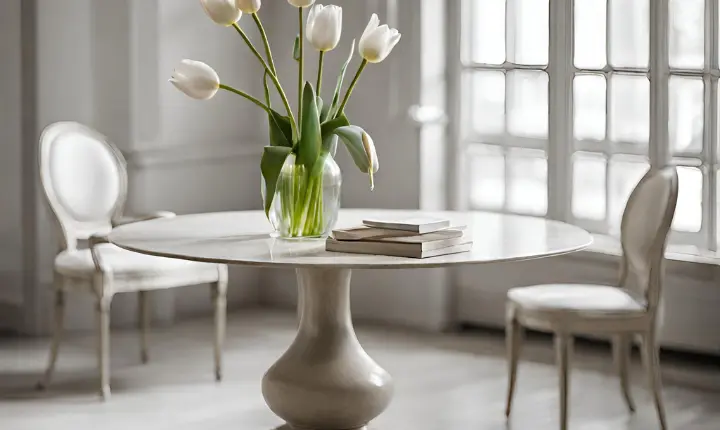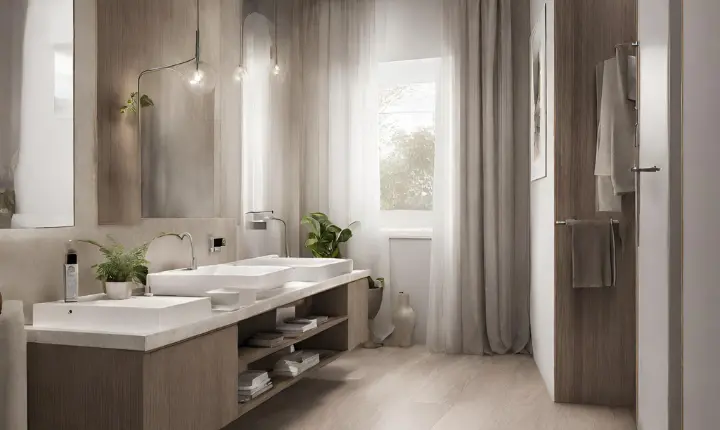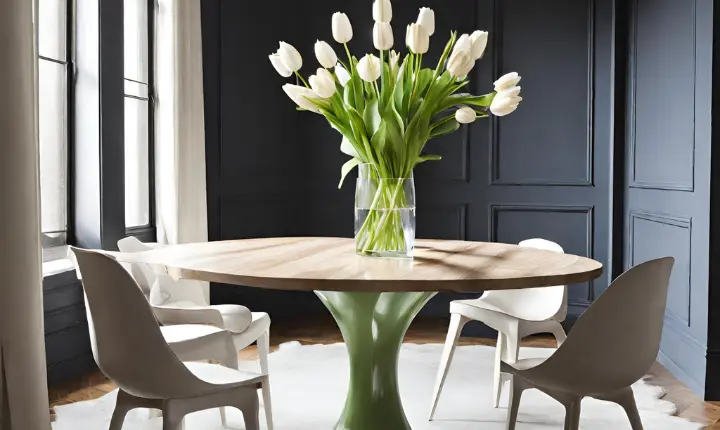In the world of interior design, trends come and go, but some pieces manage to stand the test of time. One such iconic piece is the tulip table. Designed by Eero Saarinen in the 1950s, the tulip table has been a symbol of modern elegance and functionality. As we navigate through ever-evolving design trends, the question arises: Are tulip tables still in style?
The Origin of the Tulip Table

Designed during a time when traditional furniture styles dominated the market, Eero Saarinen sought to break free from the monotony. The tulip table, with its sleek and minimalist design, was an extreme departure from the heavy, ornate tables of the past. Saarinen envisioned a table that would eliminate the clutter of traditional legs, opting instead for a single pedestal that seamlessly transitioned into the tabletop.
Timeless Design
One of the key reasons tulip tables have endured the test of time is their timeless design. The clean lines and simple form make them versatile, allowing them to complement a variety of interior styles. Whether placed in a mid-century modern living room, a modern kitchen, or a more traditional dining space, tulip tables effortlessly blend in while adding a touch of sophistication.
Versatility in Material and Finish:

Tulip tables are available in a range of materials, from classic white or black laminate to marble and wood. This versatility in material and finish ensures that tulip tables can adapt to different design preferences and color schemes. The sleek base paired with various tabletop options allows for customization, making it easy for homeowners and designers to integrate tulip tables into diverse interiors.
FAQs
Q. What is a tulip table?
- A tulip table is a modern and iconic piece of furniture designed by Eero Saarinen in the 1950s. It is characterized by a single pedestal base that seamlessly transitions into the tabletop, eliminating the need for traditional legs.
Q. Are tulip tables still in style?
- Yes, tulip tables are still in style. Their timeless design and versatility make them a popular choice for various interior styles, from mid-century modern to contemporary.
Q. What materials are tulip tables made from?
- Tulip tables are available in a variety of materials, including classic white or black laminate, marble, and wood. The diverse material options contribute to their adaptability and ability to complement different design preferences.
Q. How do tulip tables fit into small spaces?
- Tulip tables have a compact footprint due to their single pedestal design. This makes them an ideal choice for smaller homes and apartments, allowing for more flexible seating arrangements without compromising on style.
Q. Can I customize a tulip table?
- Yes, tulip tables often come in various finishes and materials, allowing for customization to suit individual preferences. Modern interpretations by contemporary designers also offer additional options for those looking for a unique twist on the classic design.
Conclusion:
In the ever-changing landscape of interior design, the tulip table has proven itself to be a design icon with enduring appeal. Its timeless elegance, versatility, and space-saving qualities make it a sought-after piece for both classic and modern interiors alike. Whether you’re furnishing a new home or updating your existing space, the tulip table remains a stylish and functional choice, showcasing the seamless marriage of form and function that represents great design.
